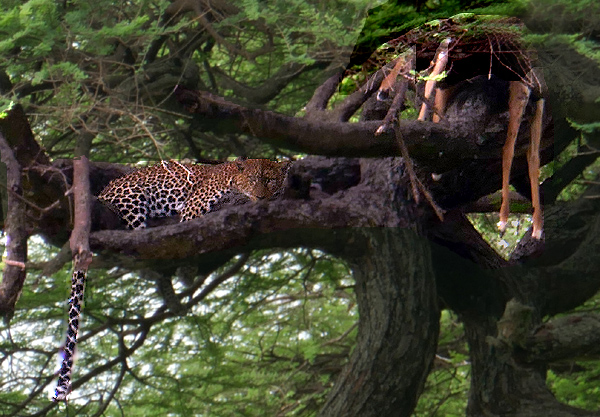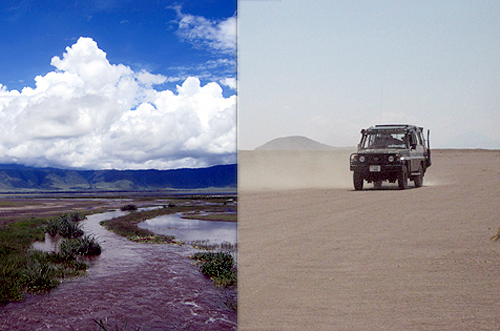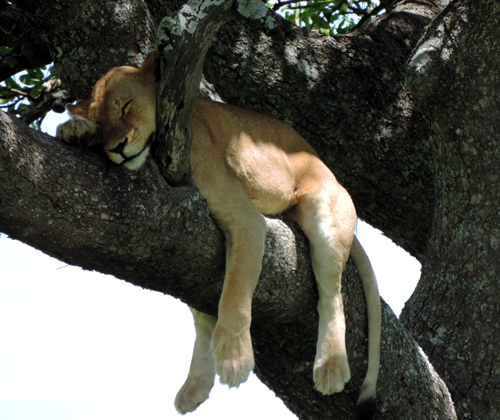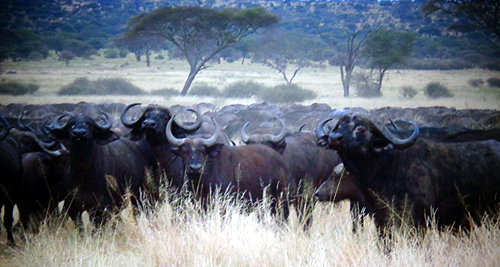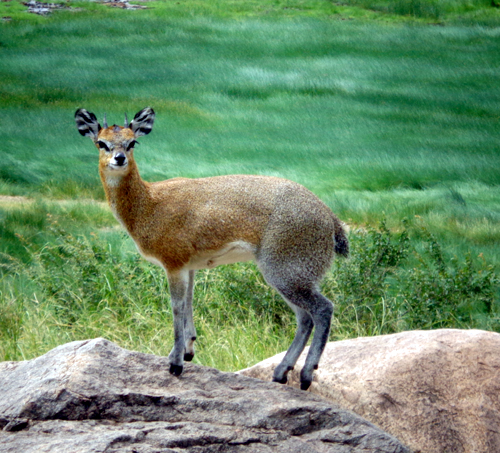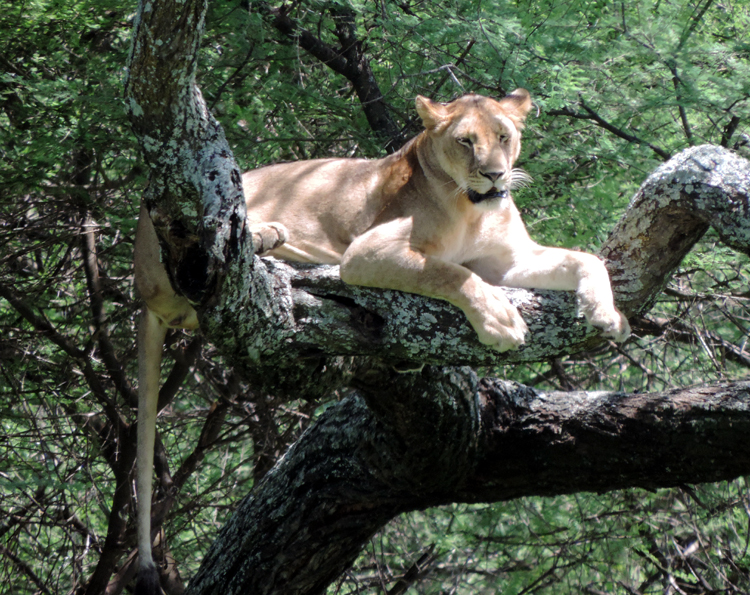A Tanzanian conservationist is denied entry to a Manyara tourist lodge, because it’s a “no-go for natives.” Can someone tell me what century we’re living in?
The immediate fault is with the Chinese, an almost off-handed exportation of the racism and exclusionism in their own society. The secondary fault is with corrupt Tanzanians, who are proving they’re almost as bad as the Kenyans. And the way was paved for it all by the fight for democracy by the west!
Let me link the dots in this wadoadoa.
Madoa mbukubwa
Last month, David Maige, gathered some of his family for an afternoon outing to Lake Manyara Lodge, one of the most beautiful places in Tanzania to enjoy a cup of tea. The lodge is perched on one of the most dramatic examples of the Great Rift Valley, directly over Lake Manyara National Park with spectacular views.
He was stopped at the gate by guards who told him that the hotel was a “no-go for natives.”
Maige, who was born and raised in Manyara and is now an employee of the national parks, reported the incident to Tanzania’s Minister for Tourism, Shamsa Mwangunga. As reported in Tanzania’s Guardian newspaper, Maige said, `Honourable Minister, as domestic tourists, Tanzanians are facing discrimination at the hotel. We are not allowed to approach the facility, let alone getting in and being served.”
Ms. Shamsa hightailed it up to Manyara, made a surprise visit to the lodge and confirmed the barrier policy. Over tea over the Great Rift, Ms. Shamsa was told by two property heads (again as reported in the Guardian), “Our hotel is close to a residential area, and so we felt it necessary to control unnecessary influx, taking into account that we have suffered three robbery incidents.”
Kali ya wadoa
The first three lodges built on the Tanzanian northern safari circuit were in the early 1960s by a Swiss company: one in Ngorongoro, one in the Serengeti, and the one under discussion at Lake Manyara.
By today’s standards they’re very simple, often called plain, but I’d rather think of them as Frank Lloyd Wrightish. The problem was that as soon as travelers began using them, they stopped working. The outside was beautiful, but the inside didn’t function. Water supplies had been poorly engineered, and it wasn’t too long before water rationing at all three lodges was in place. Sometimes not having a toilet is better than having one that doesn’t flush.
Less than a decade after they were opened, Tanzania and Kenya had the great fight that sealed the borders between the two countries. Kenya embraced Wall Street. Tanzania embraced the Rising Sun, and terrible shortages of all things necessary to hotel management were no longer available in Tanzania. Things went from bad to worse. Water rationing no longer occurred, because there was no water at all.
In those fateful days of the 1970’s, EWT would often bring food and water with our safari vehicles if we were staying at those lodges, which at the time were the only lodges there were.
Bad engineering. Loss of patrons. Complete lack of use. At 20 years old they were already museums.
Wadoadoa wa PingPong
As I’ve often written before, the 1980s heralded the RETURN OF CAPITALISM to all of Africa, including Tanzania. Today, Tanzania has some of the most beautiful lodges in Africa.
In days of swank and style, it was even harder to do anything with these three poor lodges. Most of the time, they were owned and operated by the Tanzanian government. You could get great deals and stupendous views without water.
To its credit the Tanzanian government tried everything to offload the albatrosses. A number of good companies partnered with the government to try to rehabilitate the lodges, including several very reputable South African companies, and even the giant French Accor company (that owns Sofitel and Novotel). But to no avail. Ownership went back and forth between hopeful private enterprises and the Tanzanian government.
Kidemokrasi kidoa… labda, kidogo
While all this was happening, prior to the end of the Cold War, the west had opened the bank vaults to any country willing to embrace “democracy.”
President Reagan instituted a new and very important officer in all embassies world-wide, the “Democratization Officer.” Democracy meant capitalism. The World Bank insisted that everything, even small little parastatals like organized big game hunting, be privatized. Aid flowed virtually without any accountability, if only the country gave the U.S. embassy’s Democratization Officer and the New Capitalism a rousing welcome.
Tanzania privatized mining. Airlines. Electricity. Big Game Hunting. But every day the American Democratization Officer came to work, those three historic lodges were still owned by the Tanzanian government. Shame, shame. More money, please.
U.S. Aid financed engineering consultants, business consultants, financial partners, ecotourism partners, and soon everybody was getting a little bit of American money to do their thing for these poor three lodges, and there were so many routes for funds that nobody could count the total.
Unbounded, unaccounted for, U.S. Aid. So lots of private people and companies owned, at least for a little while, these three lodges.
Still, no water.
One report by the IPP Media in Dar-es-Salaam estimated that the total inflow and outflow of U.S. and other western capital for these poor three lodges could have rebuilt the entire tourism industry in Tanzania multiple times over. What happened to all this money?
Not only in tourism, but in any industry with such rampant transfer of unaccounted for funds, a lot blew into the opened pockets of people positioned along the route.
Mafuta madoa
China has had a historic presence in Tanzania starting in about the 6th Century. Later, they built Tanzania’s railway. But the surge in capitalism in China meant China needs oil. BP Shell had long given up on the East African coast, but not China.
I’ve written recently how China may have discovered (or think they will) oil in northern Kenya. With mind-boggling speed, they built a road 300 miles into the desert to get ready. I have wished and dreamed for this road for 33 years. It happened in six weeks between two of my safaris!
In Tanzania, they’ve been looking and looking and looking for oil. Capitalism works best when you don’t admit it. But I must admit I can’t find hard evidence for the following presumptions, so in the spirit of true capitalism, here goes:
In January, 2007, I took one of my safaris into the Ngorongoro Wildlife Lodge (one of the poor, little hotels) for tea and a terrific view. We had heard the lodge had just shifted ownership, again. There was a bunch of young Indian Tanzanians in the lodge looking very hopeful. I asked what they were doing, and one gave me a card that said “Hotels & Lodges, Ltd.” and identified himself as the new owner. But he wouldn’t give me his name, and there was neither a name nor contact address on the card!
The rumor on the circuit — recounted to me multiple times — was that an Indian Oil Exploration company that was owed a lot of money by the Tanzanian government to help China find oil, was given these poor three lodges instead of cash. If I didn’t have to spend so much of my time finding lions, I would be deeper into Google to prove it. Any help will be appreciated.
China’s method for doing business in Africa is exemplary capitalism: “International observers say the way China does business—particularly its willingness to pay bribes … and attach no conditions to aid money—undermines local efforts to increase good governance,” claims the Council on Foreign Relations in its excellent June, 2008, monograph on China, Africa & Oil. Sounds like the Chinese would make excellent Democratization Officers.
Mwisha Madoa
In March last year, I took my group again to the Ngorongoro Wildlife Lodge for tea and the great view. There were guards at the door who didn’t want to let us in, this time.
There was construction going on, they said, and it might be “dangerous.”
I saw workmen. They were Chinese workmen. And they were wearing pyramid straw hats. I managed to get in, anyway, and I was told that tea was no longer Tsh. 1000/- (about 10 U.S. cents), but now U.S. dollars 5, because it was “now good tea from China.”
I paid U.S. dollars 5 for each glass of tea. It wasn’t any better. The view was outstanding as always. And in between looking over breath-taking Ngorongoro Crater, I chatted up the barman who said the Chinese now owned the hotel and we’re remaking it for Chinese tourists expected to flood into Tanzania faster than crude out of the Zanzibar reef.
“Can I come back?” I asked meekly.
He wasn’t sure I’d be let in the next time.
I’ll be trying again in a few weeks. I’ll let you know.
 There are so many difficulties with protecting African wilderness but the biggest single one is elephants. Sunday gave me a surprising new insight.
There are so many difficulties with protecting African wilderness but the biggest single one is elephants. Sunday gave me a surprising new insight.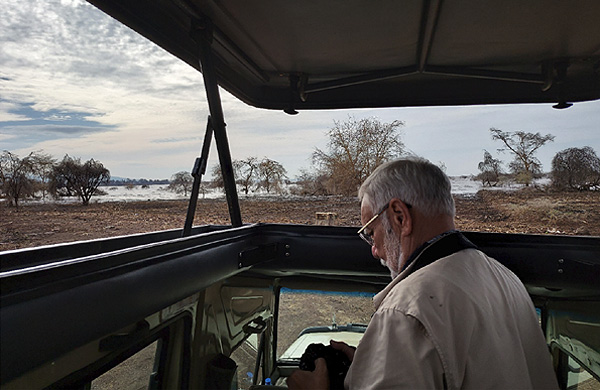 The menacing sky peeking through the opened roof above Steve in the land cruiser said it all. Those stringy clouds at 7:30 in the morning foretell a massive thunderstorm this afternoon. Yesterday afternoon we had the most extraordinary thunder imaginable, as if you were in the gods’ bowling alley during a weekend tournament.
The menacing sky peeking through the opened roof above Steve in the land cruiser said it all. Those stringy clouds at 7:30 in the morning foretell a massive thunderstorm this afternoon. Yesterday afternoon we had the most extraordinary thunder imaginable, as if you were in the gods’ bowling alley during a weekend tournament.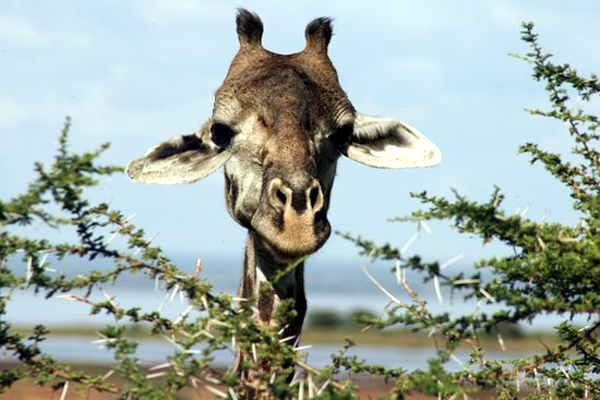 The Old Man Giraffe was all alone. Easily stripping the delectable little acacia leaves from the healthy branches, his old tongue only occasionally got stuck on one of the thick thorns the tree used to try to deter him. In fact he had his choice of dozens of blossoming trees! He was the only giraffe we saw all morning long in Lake Manyara National Park. We usually see 20-30.
The Old Man Giraffe was all alone. Easily stripping the delectable little acacia leaves from the healthy branches, his old tongue only occasionally got stuck on one of the thick thorns the tree used to try to deter him. In fact he had his choice of dozens of blossoming trees! He was the only giraffe we saw all morning long in Lake Manyara National Park. We usually see 20-30.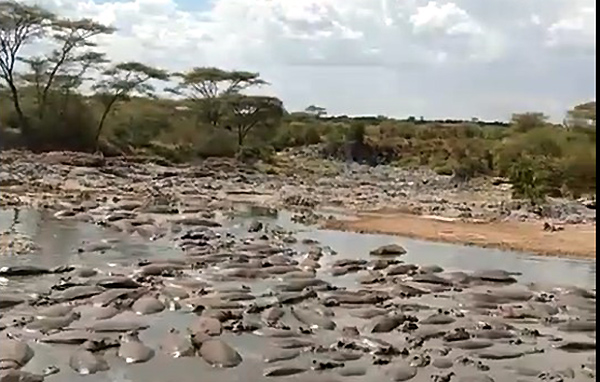
 A good safari is an adventure, and an adventure takes effort. I keep thinking of the phrase, “No Pain – No Gain.” Sure, we can end the day at an unbelievably luxurious place with bubble bath and champagne. But just take a look at a successful safari traveler stepping out of her vehicle at the end of the day:
A good safari is an adventure, and an adventure takes effort. I keep thinking of the phrase, “No Pain – No Gain.” Sure, we can end the day at an unbelievably luxurious place with bubble bath and champagne. But just take a look at a successful safari traveler stepping out of her vehicle at the end of the day: